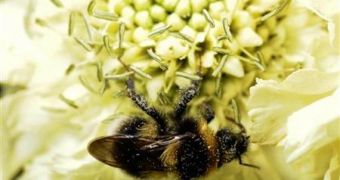The mystery behind the massive decline in the wild bee populations in North America can be explained through the spread of diseases from commercially bred species, which appear to escape from greenhouses that are used to grow crops, such as tomatoes, bell peppers and cucumbers, said researchers yesterday. Commercially bred bees, much in the same way as wild bees, pollinate the crops inside these facilities. A fall in the population of wild bees could eventually have serious consequences on the agriculture in the North American continent, the research team warned.
Last year, the arrival of an Australian virus in America triggered the mass death of wild bees. However, by studying a species of bumblebee in commercial operations, Canadian researchers found that they too can spread diseases in the wild bee populations. It all started when they observed that the commercial bumblebees were routinely escaping from a greenhouse.
Using mathematical models to predict how this process would impact the wild bee populations, they found that within several months an epidemic wave would spread amongst all wild bees, with a distribution of infection rate dropping as the distance to the greenhouse increased. Then, the wild bumblebees in the vicinity of the facility were tested for pathogens.
The results showed that although most of the parasite levels were normal, the wild bumblebees had unusual high levels of Crithidia bombi, a parasite found in the intestines of commercial bumblebees and which should be totally absent in the wild species. Additionally, almost half of the bees found in the vicinity of the greenhouse turned out to be infected with this parasite.
"All of the different species of bumblebees that we sampled around greenhouses showed the same pattern: really high levels of infection near greenhouses and then declining levels of infection as you moved out. It was quite obvious that this was coming from the greenhouses and it was a general adverse effect on the bumblebees," said Michael Otterstatter of the University of Toronto, a member of the research team detailing the results.
The Crithidia bombi parasite weakens the wild bees and often kills them, thus an infection from commercial bumblebee colonies is a significant factor in the drop in the population of wild bees, Otterstatter said.

 14 DAY TRIAL //
14 DAY TRIAL //